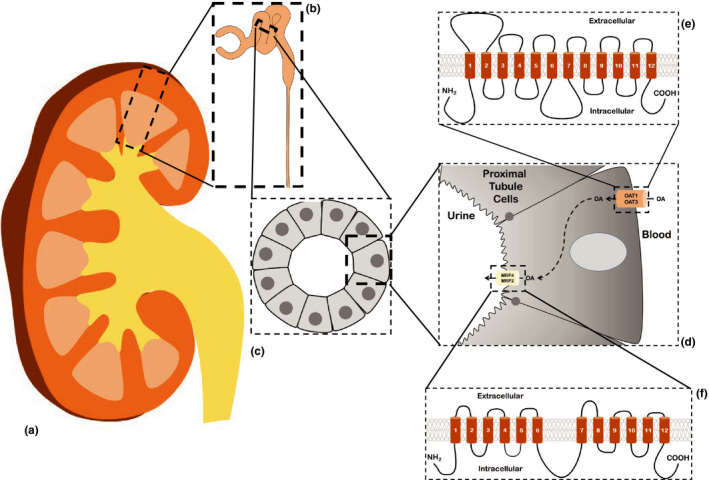Figure 1.

Transporter‐mediated clearance of organic anions in the kidney occurs in the proximal tubule and involves both SLC and ABC "drug" transporters. Illustration of the movement of organic anions out of the blood and into the tubular lumen occurring in cells of the proximal tubule. (a) Cross section through an adult kidney. (b) Enlarged area of renal cortex (indicated by dashed box in a) showing a partial nephron, including the glomerulus, proximal convoluted tubule, and a portion of the descending loop of Henle. (c) Enlarged cross section of the proximal tubule (indicated by dashed box in b), showing the arrangement of the epithelial cells around the tubular lumen. (d) Enlarged view of dashed box in c, showing a proximal tubule cell and the arrangement of SLC (OAT1, OAT3) and ABC (MRP2, MRP4) drug transporters. Organic anions (OAs) are moved from the blood and into the cell via SLC transporters (e.g., OAT1, OAT3) found on the basolateral membrane. These small anionic compounds are ultimately effluxed into the urine via ABC transporters (e.g., MRP2 and MRP4) found on the apical membrane. (e, f) Diagrams of the 12 transmembrane domain structure of the SLC e and ABC f drug transporters). [Colour figure can be viewed at wileyonlinelibrary.com]
